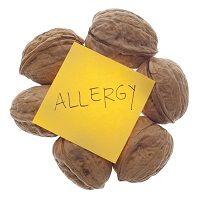Understanding and Applying the Newest Guidelines for Food Allergy
What do pediatricians need to know to effectively counsel and manage children with potentially deadly food allergies?

Allergenic foodstuffs often consist of multiple proteins which can be modified by cooking or commercial processing. The CDC reported that food allergies among US children increased approximately 50% between 1997 and 2011.
To assist pediatricians in caring for patients with food allergies, Scott H. Sicherer, MD, FAAP, gave a presentation at the 2014 AAP National Conference & Exhibition focused on recognizing the signs and symptoms of food allergy devising patient-specific management plans.
Sicherer is professor of Pediatrics, Allergy & Immunology at the Icahn School of Medicine at The Mount Sinai Hospital, New York, NY. His talk was based on the latest US guidelines.
The stated learning objectives of the presentation were i) to recognize the clinical manifestations of food sensitivity, ii) to appreciate the use and limitations of diagnostic tools for food allergy and iii) to understand the current treatment options (and investigational therapies) available for food allergy.
As an all-encompassing case study, Sicherer introduced an unlucky but fortunately hypothetical child, “Baby Jane,” who presented with severe symptoms consistent with of major food allergy at 5 weeks of age. Baby Jane went on to manifest a wide array of features and complications, including Food Protein-Induced Enteric Syndrome (FPIES) and eczema, throughout childhood to maturity and even up to her first pregnancy (Sicherer also discussed the risks of her transmitting food allergy to her offspring).
Initial symptoms included progressively worsening vomiting and diarrhea, failure to thrive, and an elevated white blood count. The patient was hospitalized and treated with intravenous fluids and antibiotics. Once admitted, the infant improved significantly but, when restarted on her milk-based formula, relapsed with profuse vomiting at 2 hours, diarrhea at 5 hours, and elevation of white blood counts to the same extent as on first admission.
The questions posed were: “Is this an allergy?” and how to test for this. Sicherer described the two main recommended preliminary tests: the skin prick test and the serum food-specific IgE immunologic laboratory test. The advantage of the skin prick test is that it is safe, inexpensive and gives an immediate result. A negative test virtually excludes an IgE-mediated cause. However, a positive test does not prove symptomatic sensitivity. The patient must be off antihistamines when the test is performed. Patch testing is not routinely recommended.
Blood serum immunologic tests that measure food-specific IgE are not affected by antihistamines. The results can be reported by the lab in different ways (levels [eg, kU/L], classes, percentages) and require careful interpretation. Test results provided by kits from different manufacturers are not necessarily interchangeable and Sicherer recommended sticking to one system to follow progress in the individual patient. Food-specific serum IgE is recommended to identify foods potentially provoking IgE-mediated responses but is not, on its own, diagnostic. Sicherer stressed that the levels obtained are not measures of severity.
Sicherer described the food-allergy conundrum whereby there can be a clinical reaction or no reaction, with or without positive IgE, and that re-exposure can convert a condition of a clinical reaction to no reaction and vice versa.
Sicherer reviewed sudden IgE allergy and anaphylaxis and the use of advanced treatments such as additional intramuscular (subcutaneous not recommended) injection of epinephrine, steroids and intravenous fluids, etc. Evaluation of sudden IgE allergy requires a careful history, physical examination, tests and background knowledge of common triggers such as peanut, tree nut, milk, soy, egg, wheat, fish, or shellfish. These items account for 90% of food allergies. He briefly discussed the investigational anti-IgE antibody therapy omalizumab and other potential future treatments.
Peanut allergy was frequently referred to during the talk and during questions afterwards. Sicherer mentioned a study where 8% of the general population had a positive test for peanut.
In summary, a holistic approach to food allergy is recommended including recognition of typical acute symptoms and syndromes, medical history and exam, consideration of the skin prick test or serum specific IgE (not diagnostic), a systematic approach to dietary elimination, nutritional counseling and medication where appropriate.